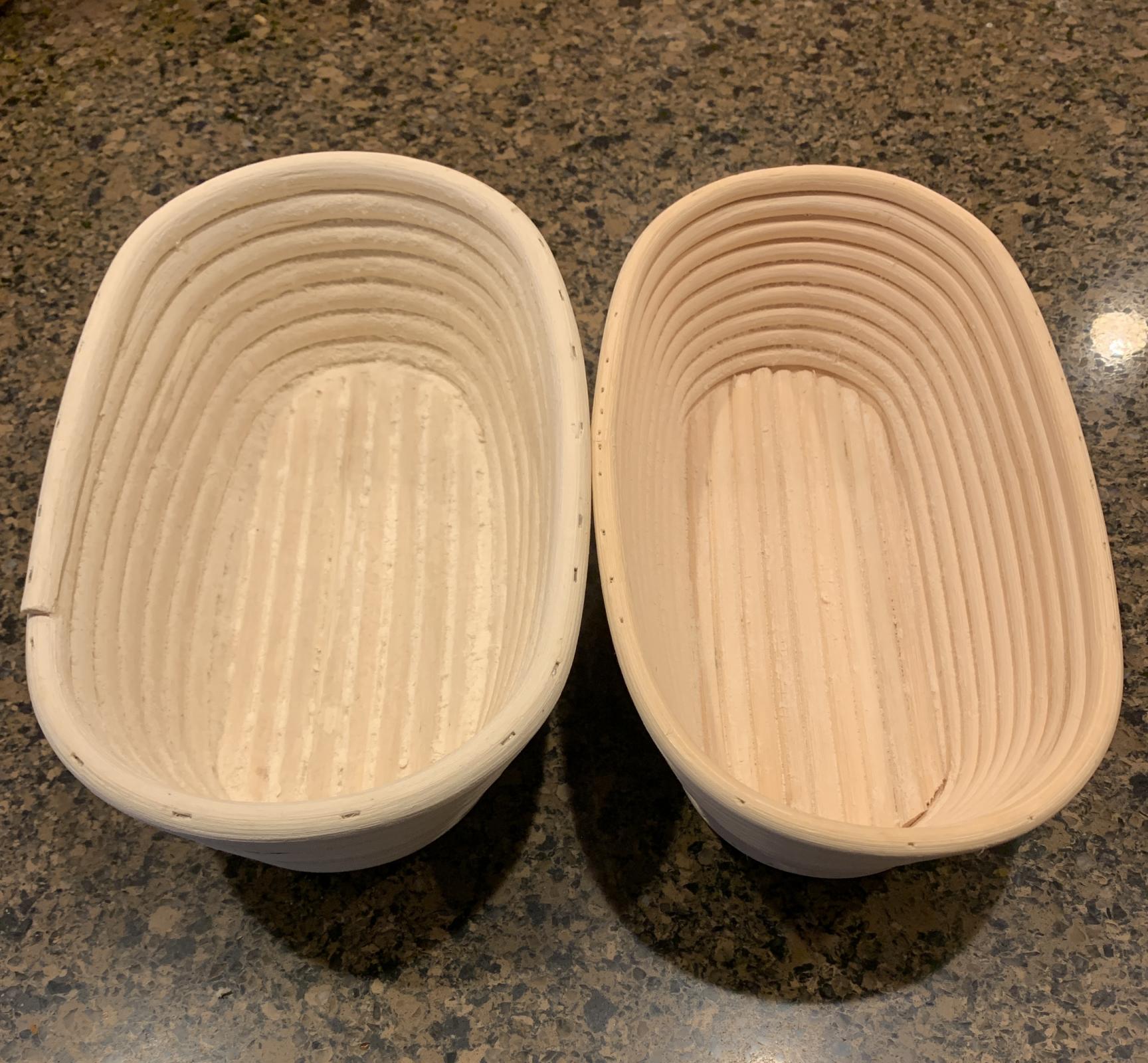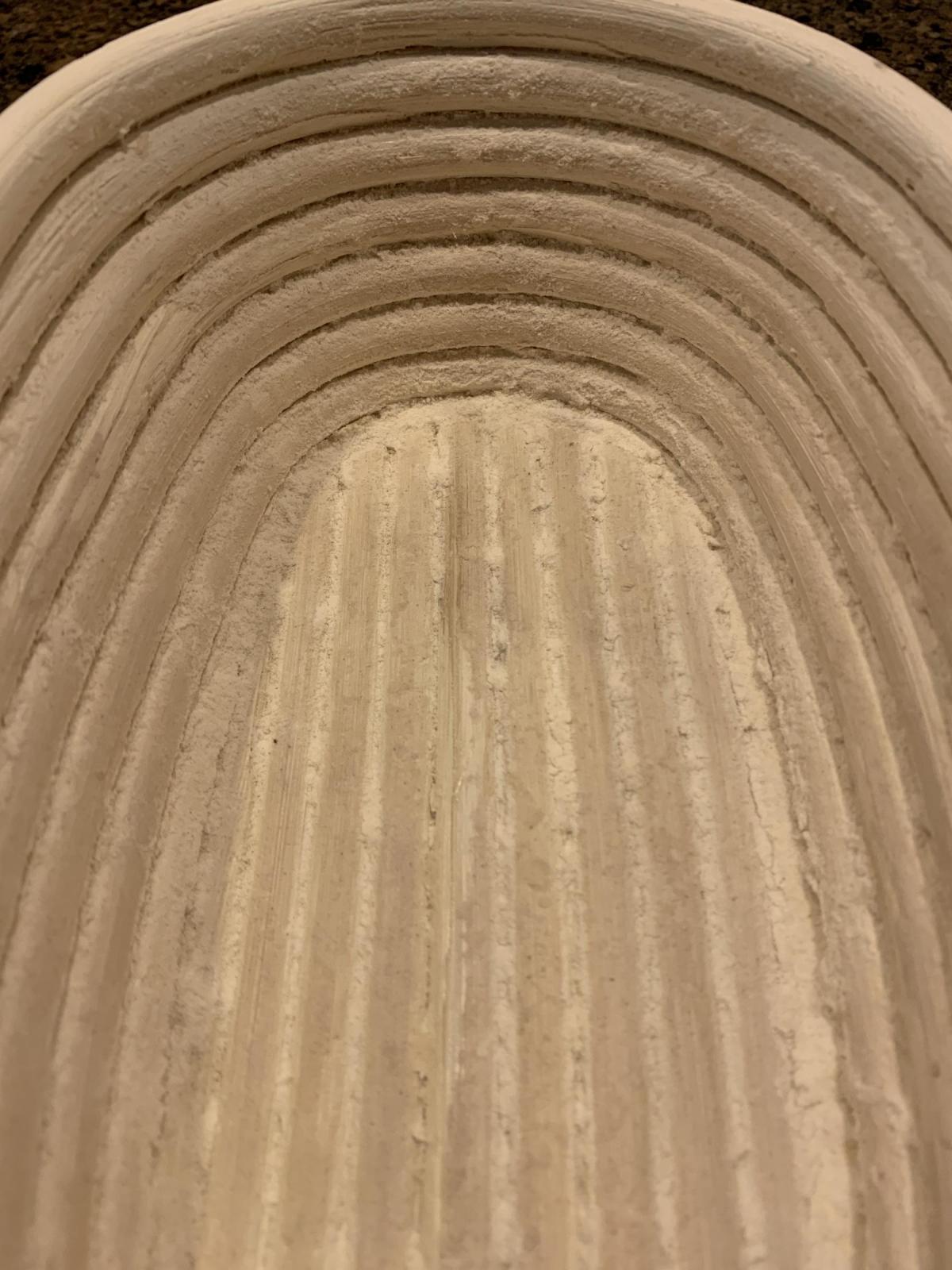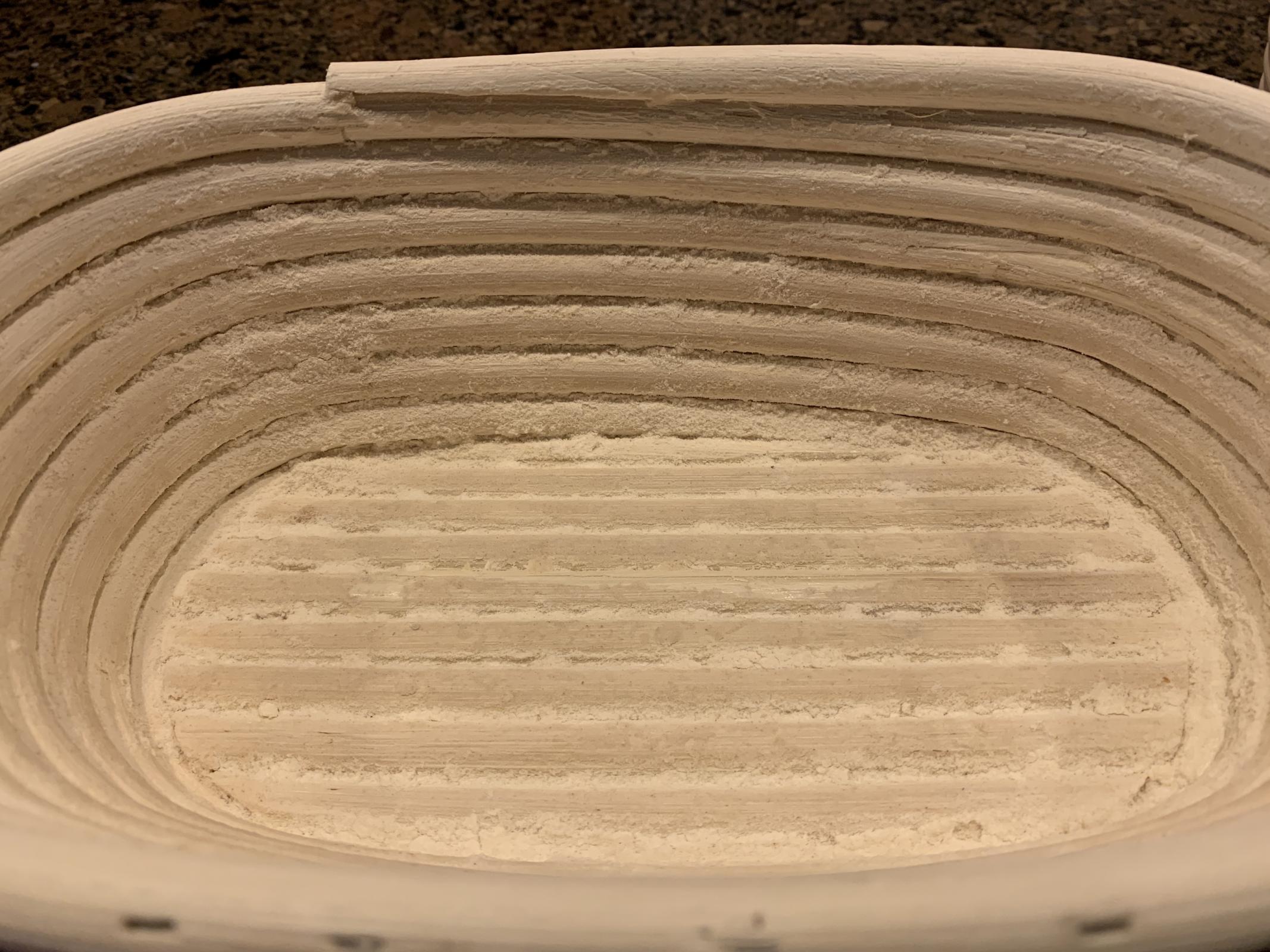I recently purchased some additional bannetons. When I received them, the ratan is a much larger diameter than my original bannetons. Because of the larger diameter, the space between the ratan is larger and deeper. With that, my doughs have somewhat stuck and not released easily. I've used this one for 6 or 7 bakes, and the dough has stuck every time. It tends to stick in the ends, but has also stuck on the side a few times too.
I usually scrape the majority of the excess flour out, but I didn't after yesterday's bake.
Any tips for keeping the doughs from sticking in these bannetons? Do you scrape the excess flour out or leave it in?
My original banneton is on the right. Smaller diameter ratan and has never had a problem with sticking.



Troy, are you using rice flour? The reason it is so good is because rice doesn’t contain gluten. Gluten in flour can cause the dough to stick more.
If you have a mill, try some rice milled a little coarse.
It may not be the thickness of the rattan that is causing sticking, but it could be its natural moisture and oil content that has not evaporated off yet due to it still being green or uncured.
That inherent moisture/oil from being new/green may have hampered the "wicking away" effect that we expect when using a banneton.
I just duck'd : how to "cure" banneton
(have to use quotes around "cure" or else it substitutes "care".)
A few websites suggest baking a brand new banneton at a low temp to cook off latent moisture. Read the times/temp for yourself, as I don't want you blaming me if you toast your banneton. :-P
I would also suggest using cookie/baking sheets to shield the banneton from direct radiant heat of the lower and upper (or backside) heating elements so that the banneton doesn't brown. And I wouldn't let the banneton rest on or touch the lower sheet, as it would also brown. (Please don't ask me how I know that. ;-) So two racks are need for a bottom-element bake, or 3 if you can't prevent the oven's upper element from coming on during bottom-element bake mode. Convection mode would be even more efficient, but still, don't let the banneton "see" any heating element that is turned on.
I would suggest removing as much flour as possible with a stiff brush and toothpick prior to the low-temp moisture-removal bake.
( I also concur with Dan about rice flour. While I always use a liner in my bannetons, I dust/sprinkle the liner with a 50:50 mix of white rice flour and AP (or bread, whichever is on hand) flour. )
Dan and Dave, Thanks for the ideas! I normally do use brown rice flour, and it has worked great for me until these bannetons came in (ordered two and they both have the same issue). First bakes were with just rice flour. The last couple were a 50:50 blend of rice and AP hoping that the AP would kind of act like a mortar and fill in the space. Both times it came out looking ragged like these pictures, so not sure I'm accomplishing much there.
Dave, Didn't think about the moisture and lack of wicking. I'll give them a good cure before the next bake and see how that goes!
Troy I have similar bannetons. I use white rice flour and rarely have any sticking unless the hydration of the dough is really high, as it overhydrated. I probably use more than I need to but I flour the dough and the banneton.
After use I just a brush to remove as much as possible since I worry that the residual rice flour might grow mold. Then I’ll leave the banneton in the oven in the residual heat after baking to fully dry.
Benny
Thanks Benny. Sounds like the dry out is the step I’m missing. Going to pop it in the oven for a bit this afternoon and see if that helps the next bake.
Hi Troy,
I rely on two solutions in such cases, depending on how sticky is the bread dough, i.e. if it's pure wheat or has rye and other gluey flours in it.
1) I rub pure starch both into the banneton and sprinkle starch over the surface of the shaped loaves. Corn starch or potato starch. After proof, I brush it off with a soft brush which takes a second and send loaves into the oven.
I use a special dusting brush for brushing off fine graphite or color pencil dust off large pieces of paper, but the regular soft brush you may have in your kitchen would do as well. It's just this artist's dusting brush is super soft and gentle, doesn't press at all so even overproofed breads won't collapse
Should any starch stay on the surface, after steaming, it simply contributes to the glossy surface of the baked loaves.
2) Stickier dough requires lining. I rub a piece of linen cloth with starch and line the banneton with it and then place the piece of dough into the cradle.
I don't bake my bannetons, or dry them in warm oven to protect the wood fibers from accidental overcooking of gums, etc. I keep mine in the freezer from time to time. They both get bone dry there and any eggs from flour weevils, mold spores, etc. get killed by the cold. So, nothing grows on them.
m.
Thanks Mariana!
The dough for yesterday’s bake was a little on the sticky side from the buckwheat. I didn’t think about the banneton liners because I never use them, but that might be a great option in this case too.
.. after rinsing it with hot water the first time, I left it to air dry before lightly misting it with water. Then, sprinkled rice flour, rubbed it in with fingers so that all those grooves disappear under all the flour. Usually I dust the dough with a lil bit of all purpose + rice flour (1:1) before placing in the banneton. After removing the proofed dough, I find there are no dough bits stuck on it. I leave the banneton to dry on the stove while the oven is on for the bake. Once the loaf is baked, and the oven cooling down, I place the banneton back in the oven to rest until it's used again. I dust and brush with a little rice flour before use. I think keeping the banneton and rice flour really dry helps a lot here. :)
- Christi